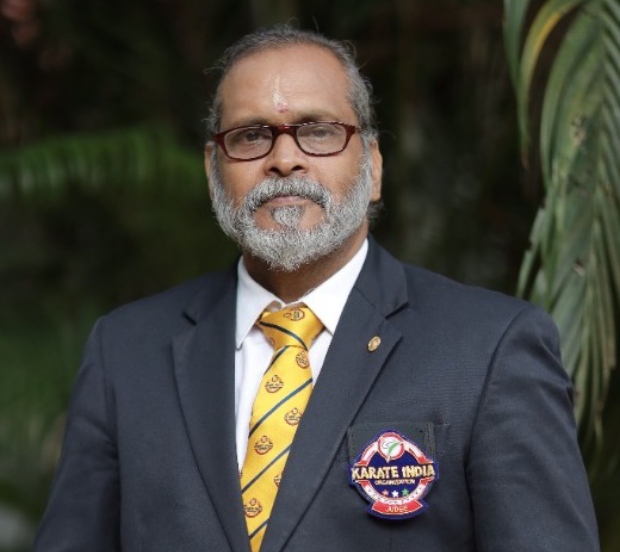KATA
Form
The system in which the karateka fights and defends against the imaginary attackers and the pre-arranged sets of movements involved in it is referred to as Kata. Kata is basically a self-defense technique and the applications of these self defenses are called bunkai (analysis) traditionally. The word oyo (applications) is also used along with this. Every kata includes an embusen or performance line and this indeed is the path of the kata or its floor plan. There is a sequential order in which kata should be performed and it is necessary that kata should start and finish on the same spot.
Kata has a history which is way too traditional and important for it is one of the earliest forms of karate training. Kata is powerful, and it teaches the student on how to be flexible and move in all directions, at times jumping or dropping. Kata has been diversified and it makes kata vivid and different from each other. When some kata are strong in nature, other kata demands speed and agility. When certain techniques are performed in a very slow yet powerful manner, some are executed in a way too sharp and quick manner. The students get to learn more of rhythm and timing, proper breathing as well as expansion and contraction of the body muscles.
An individual should be strong enough to be confident and humble at the same time when it comes to kata performance. The concept of zanshin is significantly important in kata. Zanshin refers to the “remaining mind” which connotes that one should always maintain a calm and relaxed mind which is ready, especially at the end of the kata to be aware of any attack which is likely to come from a potential danger. A kata is said to be over at the end of the final bow. 26 kata (25 without including jiin) is present in the Shotokan syllabus.
These kata are further divided into categories given below.
TAIKYOKYU
Taikyoku is basic yet important and hence it has an interpretation which means “First cause”or Basic ultimate”. Tai refers to big or great and Kyoku refers to extreme or ultimate. Thus it comes with an interpretation which means big ultimate. Taikyoku Shodan is considered ….
Read MoreHEIAN
It is Yasutsune Itosu, Gichin Funakoshi’s teacher who developed the five Heian kata (or Pinan in Okinawan) to enable the effective teaching of karate to a wider range of students. The word Heian is two words combined, heiwa which means calm or peaceful and wordantei …
Read MoreTEKKI
In the Tekki series, Tekki Shodan is known to be the first kata. It is also known to be the first kata that does not start in the traditional yoi position. This kata has 29 counts and is wholly performed in a horse stance. A simple straight line is referred to as Theembusen. The crossing step or kosa-ashi is used with all the footwork accomplished in a sideways manner, since this kata does not involve forward or backward movement. The characteristic of all Tekki kata is the crossing step which is also known as stealth step (sashi-ashi).
Read MoreSENTEI
Sentei refers to “selection”. Shotokan karate is exemplified by four “selection kata.” They are believed to be strong yet humble kata. This is usually taught at the brown belt level, and a 1st kyu brown belt needs to opt for a tokui kata from these four kata for the black belt exam. It is the tokui kata that is chosen as one’s favorite or best kata. It is also important that the black belts should be aware of the four Sentei kata for tournaments as these kata are used while they are on the elimination round. The Sentei kata predate the Heian and Tekki kata though the former kata is taught after the latter. Heian kata was developed in order to make the learning of Sentei kata simple and easy.
Read MoreADVANCED (Funakoshi)
These three katas are the representation of the advanced form of kata taught by Gichin Funakoshi. A deeper understanding of breathing, muscle contraction/expansion and timing is essential in the form of advanced kata. Only 15 out of the standard 26 Shotokan kata was taught by Gichin Funakoshi though he taught Taikyoku kata and Ten No kata. This includes 5 Heian, 3 Tekki, 4 Sentei and 3 advanced kata.
Read MoreADVANCED (Nakayama)
In Masatoshi Nakayama’s Best Karate series, which is by far one of the most comprehensive resources in the JKA Shotokan kata study, these nine kata were labeled as “Advanced kata”. A greater agility is required in these kata, as their movements are comparatively extravagant, and requires jumping, falling, high kicks etc. These kata arise from the five animals of Shaolin kung fu and have been borrowed from other styles of karate. These kata are said to be tournament favorites and bring more excitement and fun for both the performer as well as the spectator.
Read MoreADVANCED (Rare)
These two kata come with only one difference and are considered to be advanced. These kata are left in mystery as these were left out and not described in Nakayama’s Best karate series. To make up for this, JKA included Wankan in the newer series of kata books while we know that Jiin was actually removed from the JKA kata syllabus.
Read MoreThese kata are further divided into categories given below.
TAIKYOKYU
Taikyoku Shodan
Taikyoku Nidan
Taikyoku Sandan
HEIAN
Heian Shodan
Heian Nidan
Heian Sandan
Heian Yondan
Heian Godan
TEKKI
Tekki Shodan
Tekki Nidan
Tekki Sandan
SENTEI
Bassai Dai
Kanku Dai
Jion
Empi
ADVANCED (Funakoshi)
Jitte
Gankaku
Hangetsu
ADVANCED (Nakayama)
Kanku Sho
Bassai Sho
Chinte
Nijushiho
Sochin
Unsu
Gojushiho Sho
Gojushiho Dai
Meikyo
ADVANCED (Rare)
Wankan
Jiin






